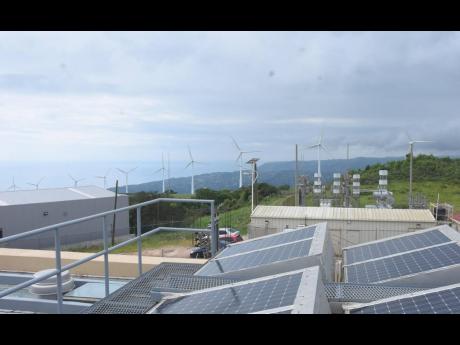Wigton earnings gusting in right direction
With favourable winds and high equipment availability, Wigton Windfarm Limited breezed past its 2020 profit performance, topping the $664 million earned last year by nearly 19 per cent. The improvement came despite third quarter wind-availability...
With favourable winds and high equipment availability, Wigton Windfarm Limited breezed past its 2020 profit performance, topping the $664 million earned last year by nearly 19 per cent.
The improvement came despite third quarter wind-availability anxiety, and flowed from improved revenue.
The renewable energy company’s sales income grew to $2.59 billion for year ended March 2021, up seven per cent from $2.42 billion the previous year.
Managing Director Earl Barrett says Wigton benefited from better-than-expected wind availability in the fourth quarter.
“We actually surpassed budget by an appreciable amount. November was exceptionally good. That fact was also assisted by changes in the exchange rate, since we bill in US dollars but we’re paid in Jamaican dollars,” Barrett told the Financial Gleaner.
Wigton continued to execute its maintenance schedule, but is concerned that its ‘preventative maintenance programme’ could have negative medium-term impacts on earnings.
Preventative maintenance is a critical part of Wigton’s business continuity, under which it periodically takes each of the 44 wind turbines out of service to rebuild gear boxes, replace bearings and change other implements that serve to prolong turbine life, and keep them ready for when there is enough wind to turn the blades and generate power.
Wigton can generate up to 63 Megawatts that it sells under contract to Jamaica Public Service Company Limited (JPS), exclusive operator of the national power grid.
The wind farm, which was developed over several years in three phases in central Jamaica, says that Wigton Phase II, which was commissioned in December 2010 and supplies 18 MW power to the grid, transitioned to a new rate structure that will result in an estimated 50 per cent decline in revenue from the Phase II turbines.
The former ‘avoided rate’ at which it was compensated by JPS, came to an end in March. The company previously disclosed that, as of this fiscal year, it expects total revenue to decline by 14 per cent per annum, as a result.
Barrett says, while the projection still holds true, the overall effect may be ameliorated by changes in currency rates and ‘turbine availability’.
“It is really a moving target. The rate per kilowatt hour is US$0.08, but paid in Jamaican dollars. Those calculations were based on the exchange rates available at that time. That expected 14 per cent may change to 13 per cent or even 12.5 per cent, depending on what the exchange rate is at that time,” he said.
Six units were taken out for scheduled maintenance but not all were offline at the same time. Turbine availability, that is the capacity to generate power once there is wind gusts of more than seven miles per hour, was estimated at upwards of 90 per cent, said Barrett, but he also noted that, while that rate was within internationally accepted standards, it was still less than the 93 to 97 per cent rate the company experienced in former times.
“We try to schedule the jobs so that there would be as little disruption as possible, and an easy flow between repair jobs,” he said, adding that only one of the six units is left to be put back into service. At the latter part of the year, Wigton had some maintenance problems that were exacerbated by the COVID-19 pandemic. Parts that were sent overseas for repairs suffered delays, Barrett said, because of lockdowns and travel restrictions that hindered logistical arrangements. He adds, however, that the logistical fallout was offset by higher-than-expected wind speeds, allowing more power to be produced from the available units.


